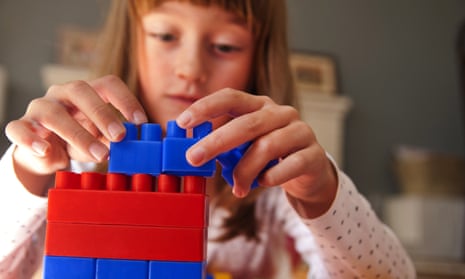One of the world’s largest engineering institutions is warning against gender stereotyping of toys in the run-up to Christmas amid concern it could be discouraging girls from pursuing a career in engineering and technology.
Research by the Institution for Engineering and Technology (IET) found that toys with a science, technology, engineering and maths (Stem) focus were three times as likely to be targeted at boys than girls. And despite high-profile recent campaigns that have had some success, toys for girls are still overwhelmingly pink.
The IET’s mission is to encourage more girls to pursue careers in engineering, science and technology. Latest figures show women account for just 9% of engineers in the UK, despite enthusiasm among girls at primary school for information and communications technology (ICT) and computing (according to recent IET research, 39% say they enjoy it), maths (38%) and science (36%).
“Societal stereotypes driving these gendered listings could be having a knock-on effect for the next generation of engineers, especially girls, impacting their future career choices,” the IET warned.
“Whilst the onus is on the parents to think outside the pink and blue boxes when shopping for their children, toy retailers and search engines also have a responsibility not to perpetuate gender stereotypes. Search engines in particular could look at introducing ways of detecting patterns of gender bias.”
IET analysis of leading search engines and toy retailers’ websites found that of the Stem toys on offer, 31% were listed for boys compared with just 11% for girls. A search using the terms “boys’ toys” and “girls’ toys” found nine out of ten (89%) toys listed for girls were pink, compared with 1% for boys.
Mamta Singhal, a toy engineer and IET spokeswoman, said she had traditional “girls’ toys” as a child but also loved playing with cars, building blocks and creative kits. “The research shows girls clearly do have an interest in science, technology and engineering subjects at school so we need to find ways to help this to translate into a higher number of women entering the industry.
“The marketing of toys for girls is a great place to start to change perceptions of the opportunities within engineering. The toy options for girls should go beyond dolls and dress-up so we can cultivate their enthusiasm and inspire them to grow up to become engineers.

“The toy industry is changing slowly and over the years more gender-neutral toys such as science kits have started appearing. Toys can really influence what a child does in later years, therefore Stem toys are a natural move for the industry.”
Jess Day from Let Toys Be Toys, which campaigns to encourage retailers to stop categorising toys by gender, said toy marketing too often promoted the idea of separate toys for boys and girls.
“Many retailers have made real progress over the last few years, dropping gender labels in stores and online – our new research shows a 70% decrease in the use of online gender navigation options since 2012 – but there’s still work to do to challenge the stereotyped ways that toys are often packaged and promoted.
“We previously asked women engineers and scientists about the toys they played with as children and the most interesting finding was, not that they all played with construction or science toys, but they didn’t recall being aware of a distinction between girls’ and boys’ toys at all.
“It’s not just the toys which are the issue, but the whole idea that some things are just for boys or girls. If children learn that early, it’s hardly surprising that they go on to apply this logic to their career choices, too.”
Simon Ragoonanan, who has a daughter and writes a blog, Man vs Pink, documenting his “ongoing struggle against pinkification”, recently published an alternative Christmas gift guide for girls which includes a build-your-own computer kit, a Lego “ultimate Spiderman bridge battle”, and female Star Wars character Rey’s lightsaber.
““People often opt for what they think is a safe option which is how gender stereotypes come into play,” he said.
“As a father to a four-year-old daughter who loves sci-fi and superheroes, I feel strongly that little girls should aspire to be more than just princesses and that all toys are gender neutral.”
Top gender-neutral Stem toys for Christmas, as suggested by the IES
- Meccano Micronoid
- K’nex ferris wheel building set
- Science Mad chemistry lab
- Lego Super Heroes (featuring Batman, Superman, Wonder Woman, Lex Luthor and Lois Lane)
- Kano computer kit bundle
